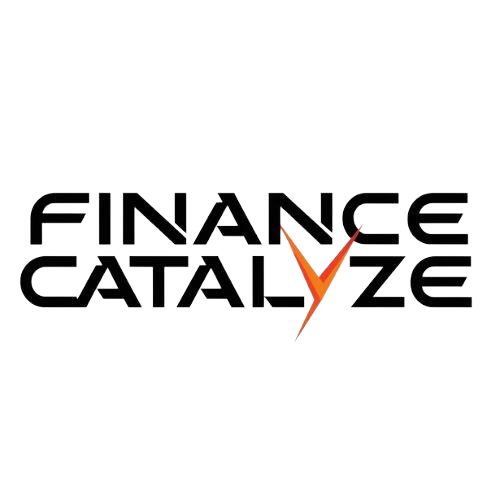You have likely heard the terms regional bank and national bank thrown around. But what exactly separates these financial institutions? Let’s dive in and explore the nitty-gritty details in a way even your quirky Uncle Bob could understand.
Asset Size: The Golden Line Between Regional Bank and National
At its core a regional bank is defined by its asset size – the total value of its loans investments and other holdings. According to the Federal Reserve, a regional bank falls within the range of $10 billion to $100 billion in assets. Flagstar Bank ($90.1B) and Zions Bank ($90B+) are prime examples operating at the higher end of this spectrum.
In contrast, national banks are the heavyweights with assets typically exceeding $100 billion. Think juggernauts like JPMorgan Chase ($3.67 trillion), Bank of America ($3.05 trillion), and Wells Fargo ($1.93 trillion).
To visualize it simply, think of regional banks as the Goldilocks zone—not too big, not too small. Just the right size to cater to your neighborhood banking needs without being an unwieldy behemoth.
Geographic Reach: Exploring Their “Regional” Footprints
The name regional bank is a bit of a misnomer these days. They did operate exclusively within specific geographic regions, as the name implies. Many have expanded their footprints across multiple states while maintaining that community centric approach.
Take First National Bank of Omaha (FNBO) as an example. Founded over 165 years ago to serve Nebraskans, it now boasts a presence across eight states: Colorado, Illinois, Iowa, Kansas, Nebraska, South Dakota, Texas, and Wyoming.
In contrast national banks tend to have a truly nationwide presence with thousands of branches blanketing the country. This ubiquity allows them to serve customers seamlessly, whether you’re in New York City or rural Montana.
Also read this: Earn Up to 5.55% on Your Savings! Top High-Yield Accounts for June 2024
Services Offered: What’s on the Menu or Regional Bank?

When it comes to bread-and-butter banking services, regional banks have you covered with the usual suspects:
- Checking and savings accounts
- Loan products (mortgages, auto loans, personal loans, etc.)
- Credit cards (some with rewards programs)
- ATM access (within their network and beyond)
Many regional banks also provide business banking services, making them a one-stop shop for entrepreneurs and small businesses. This can include everything from commercial lending and cash management to merchant services.
Compared to smaller community banks, regional counterparts often provide a wider array of services and investment products like IRAs and taxable accounts. However, they may lack the breadth of services found at national banks, which can extend to investment banking, wealth management, and more.
The Perks of Going Regional (or National)
Both the regional and national banking models come with their own set of advantages. When choosing between the two it ultimately boils down to your priorities as a consumer or business owner.
Regional Bank Perks
- More personalized service: Smaller customer base allows for more attentive, community-focused banking.
- Lower fees: Regional players typically have lower fees and minimums compared to national giants.
- Community roots: These banks are often deeply involved in the areas they operate, supporting local causes.
National Bank Pros
- Widespread access: Extensive network of branches and ATMs for ultimate convenience.
- Robust digital banking: Top-notch online and mobile banking platforms fueled by bigger budgets.
- Breadth of services: One-stop shop for personal banking, business solutions, wealth management and more.
Ask yourself: Do you prioritize that personal touch and connection to your community? Or is a vast digital/physical footprint with every offering under the sun more your cup of tea?
The choice boils down to what resonates most with your lifestyle and needs. As Uncle Bob would quip:
Prioritizing face-to-face interaction with folks who know your name? A regional bank may just hit the sweet spot there, kiddo.
Safety Considerations: Are My Deposits Protected?
In the wake of the 2023 failures of Silicon Valley Bank and Signature Bank, consumers understandably have concerns about the safety of their deposits – no matter which bank they choose.
Here’s the reassuring reality: For any FDIC-insured bank (including regional and national institutions), the Federal Deposit Insurance Corporation protects your deposits up to $250,000 per depositor, per account ownership category, per institution.
| Bank Type | FDIC Insurance Coverage |
| Regional Banks | Up to $250,000 per depositor, per account ownership category |
| National Banks | Up to $250,000 per depositor, per account ownership category |
| Community Banks | Up to $250,000 per depositor, per account ownership category |
The FDIC supervised banks of all sizes, including regional players, to ensure they maintain reasonable risk levels and operate in a safe and sound manner. While no system is perfect, the FDIC’s oversight provides a critical safeguard for your hard-earned money.
So you bank at the regional credit union down the street or a multinational giant you can take comfort knowing your deposits are protected by the full faith of the U.S. government.
Recommended blog: MASTERING RAISER 6795 EDI PAYMENTS
Craft an Experience with the Right Bank

At the end of the day, the regional vs. national bank decision boils down to finding the right balance of services, accessibility and overall experience for your unique needs.
Regional banks pride themselves on that localized community driven approach serving as a familiar face and financial partner deeply rooted in the areas they operate. National titans leverage their size and resources to provide unparalleled convenience through extensive branch networks and cutting edge digital capabilities.
Only you can decide which attributes matter most. Does the thought of your banker waving to you at the neighborhood barbecue put a smile on your face? Or does having access to a global ATM network while traveling sound more your speed?
There’s no objectively superior model it is all about crafting the banking experience suited to your priorities. So embrace your personal or business needs evaluate your options and get ready to experience banking tailored to your community’s heartbeat (or national growth plans!).
Frequently Asked Questions
How do regional banks make money?
Regional banks generate revenue from several key sources:
- Interest income: This is the primary money-maker – the spread between the interest rates charged on loans and the lower rates paid out on deposits.
- Fees: Regional banks collect various fees from customers, such as account maintenance fees, overdraft fees, loan origination fees, etc. These tend to be lower than national bank fees.
- Income from investments: A portion of the bank’s assets are invested, generating returns that contribute to overall profits.
Are regional banks heavily regulated?
Yes, regional banks face stringent regulation and oversight from various government bodies:
- The Federal Deposit Insurance Corporation (FDIC) oversees regional banks, examines them for safety/soundness, and protects consumer deposits.
- Regional banks are also regulated at the federal level by the Federal Reserve Board, the Office of the Comptroller of the Currency, and more.
- State banking regulators provide additional oversight for regional banks operating within their jurisdiction.
This multi-layered system of regulation aims to maintain a stable and secure banking environment for consumers.
Do regional banks offer digital banking services?
While regional banks are celebrated for their community ties and personalized service, they have duly embraced digital banking solutions:
- Online banking platforms for account access and money management
- Mobile apps for on-the-go banking
- Mobile wallet/payment capabilities
- Remote deposit capture
- Online loan/account opening
The digital offerings may not be as expansive or cutting-edge as national banks, but regional counterparts continue to enhance their digital capabilities to meet modern consumer demands.
What are some of the largest regional banks in the U.S.?
While the term regional may imply a smaller scale there are several major regional banks operating across multiple states. Some of the largest include:
PNC Bank ($521 billion in assets) Operating across 27 states and Washington D.C., PNC is a banking powerhouse concentrated in the Mid-Atlantic, Midwest and Southeast regions.
U.S. Bank ($495 billion in assets) Headquartered in Cincinnati, U.S. Bank has over 3,000 branches spanning 26 states, primarily in the Midwest and West.
Truist Bank ($469 billion in assets)
The result of a merger between BB&T and SunTrust, Truist boasts a strong presence across the Southeast and Mid-Atlantic states.
Fifth Third Bank ($207 billion in assets) Based in Cincinnati, Fifth Third operates across 10 states in the Midwest and Southeast with over 1,100 branches.
While large these institutions maintain their identity as regional banking forces focused on serving customers in their core geographic footprints.
Do regional banks offer competitive products and rates?
One of the perks of regional banks is their ability to go toe-to-toe with national banks in terms of competitive rates and product offerings without the inflated fee structures.
When comparing rates on common products like:
- Mortgages
- Auto loans
- Personal loans
- Savings accounts
- Certificates of Deposit
You will often find regional banks matching or even beating the rates advertised by the big national brands.
Many regional players offer unique products tailored to their local customer base such as affordable mortgage programs for first-time homebuyers in the communities they serve.
By maintaining a keen understanding of their markets regional banks can price their products competitively while avoiding excessive fees that drain consumer wallets.
The Bottom Line
As you can see the regional vs. national bank decision involves evaluating your unique priorities around services accessibility fees and overall banking experience.
Regional banks leverage their local focus to provide personalized service, competitive rates and a vested interest in community development. Meanwhile national titans wield their size for maximum convenience through sprawling branch networks cutting-edge digital platforms and a vast array of complex financial offerings.
There is no objectively better model it comes down to your specific needs as a consumer or business owner. So embrace your priorities evaluate your options and craft a banking partnership that keeps your financial life running smoothly.
No matter which route you go sleep soundly knowing your deposits are protected by the full faith and credit of the FDIC’s insurance.

Haarrii, a seasoned finance expert with 4 years of hands-on experience, brings insightful analysis and expert commentary to our platform. With a keen eye for market trends and a passion for empowering readers, Haarrii delivers actionable insights for financial success.







